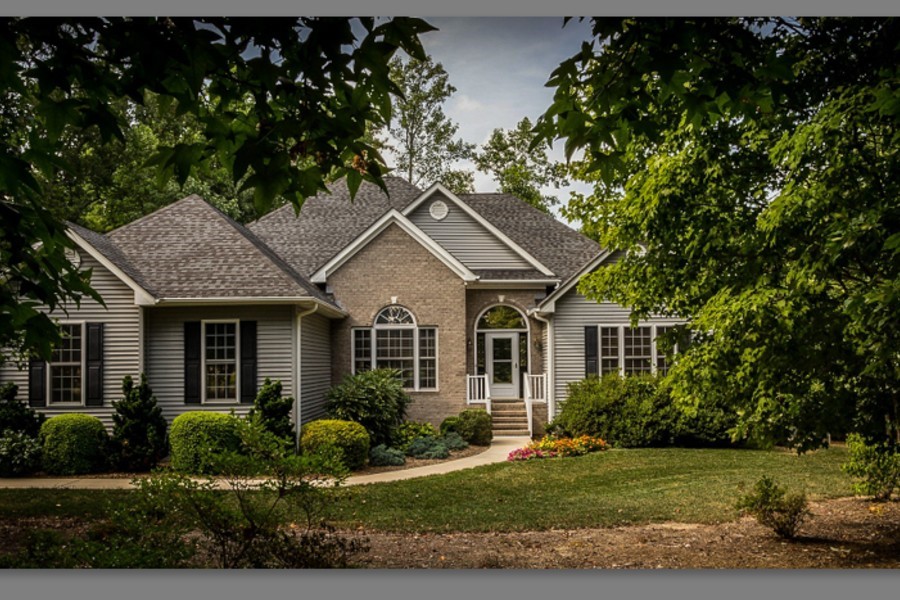
As an Amazon Associate we earn from qualifying purchases.
Don’t you hate when a photo comes out blurry? This may happen due to a slow shutter speed, a camera shake, or a lens without image stabilization. Learning how to fix out of focus pictures in Lightroom ensures you deliver crisp, quality real estate images.
Quick Navigation
To fix out of focus images in Lightroom, you can use the Basic and Details Panel, the Adjustment Brush, or presets. With the Basics and Details Panel, you can make targeted adjustments using Clarity, Highlights, Sharpening, and Noise reduction. The Adjustment Brush lets you do selective sharpening, while presets may apply default sharpening settings.
Correcting a blurry photo seems impossible sometimes. However, Lightroom Classic CC has features that let you tweak and sharpen the image to restore the details. Here is where Lightroom’s robust sharpening tools come in handy.
The Develop Module in Lightroom comes with features that can fix blurred images. You can process your images in various ways from multiple options in the drop-down menus, sliders, and other forms of adjustment.
I recommend using the following sliders. However, your workflow might deviate if your image requires specific edits.

At first, I will adjust the clarity and highlights of the image under the Basic Panel. To access the panel:
Blur in a real estate image hides important details. Bringing up Clarity is an excellent way to start the processing.
Increasing the Clarity will crisp up the image by making fine adjustments to the details. This is specifically required in real estate
You may or may not need to adjust the highlights in every blurry image. However, by dropping the slider a bit, you can change it to see if it adds to the photo's appeal. It might help recover some details that add punch to the picture.

After adjusting Clarity and Highlights, tweak some basic sliders like Exposure, Whites, and Blacks to make global adjustments. You can also use these Sharpening tool values to fix a blurry image.

The noise reduction feature is present right below the Sharpness sliders. It lets you minimize the noise in the color and brightness of the photo to make it pop. Note here that a lot of reduction in noise will result in a soft image.
You can increase the Luminance slider to minimize noise and then move on to the Details slider to preserve details in your image. After that, you can adjust the Colors slider as needed.
Compare the before and after view of the image by pressing YY under the image window.

Sometimes, only a specific section of a photo gets ruined due to missed focus. As the rest of the image doesn't require editing, you can use the Adjustment Brush in Lightroom for selective sharpening.
The Adjustment Brush is present on the extreme right under the Histogram.
After that, apply the effects in the same manner described in the above section to reduce blur.
Most photographers use Lightroom these days for their post-production process. This includes applying presets for quick batch editing.
You can create presets with the settings mentioned above to sharpen out-of-focus images. Likewise, you can purchase the best ready-made Lightroom presets that fix such pictures with a click.
Lightroom has its default presets to apply Sharpening effects to photos. You can use Light, Medium, or Heavy sharpening presets from the Develop module's Presets tab on the left-hand side.
Common issues that arise while sharpening the photos during post-production include unwanted noise in the image as a consequence of increased sharpness. Additionally, straight lines are converted into zig zags due to an increased Radius value. Lastly, there could be harsh lines around the edges due to taking the sharpness to an extensive level.
While Lightroom has an auto-sharpening feature, it may not be enough to reveal the details in an extremely out of focus photo. Sometimes, an image requires further processing until it looks sharp and eye-catching.
Whether you use the Basic and Details Panel, Adjustment Brush tool, or presets, you can dix blurry real estate images and make them look sharp. Once you get the hang of fixing blurry photos in Lightroom, your image processing workflow will speed up.
